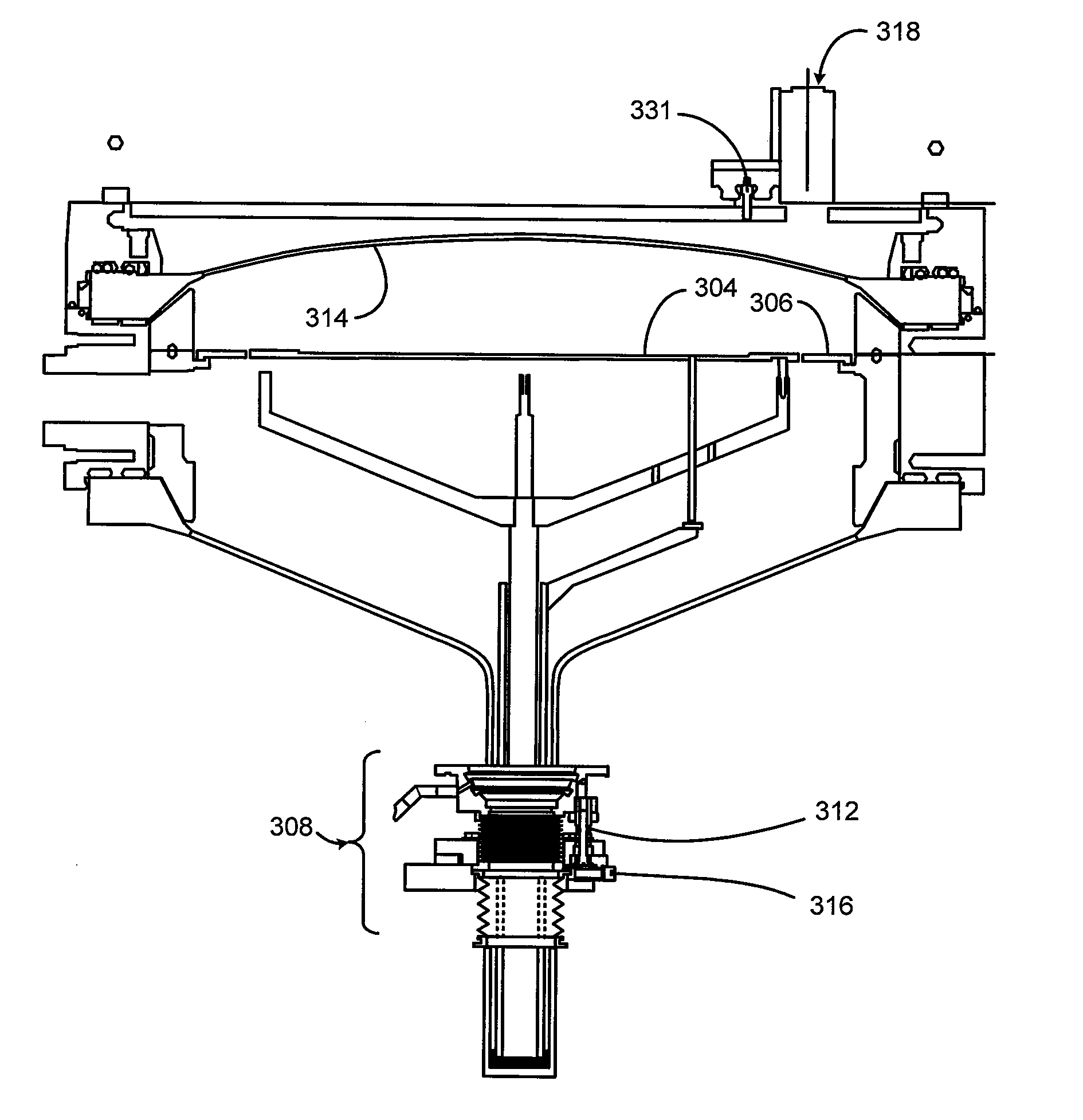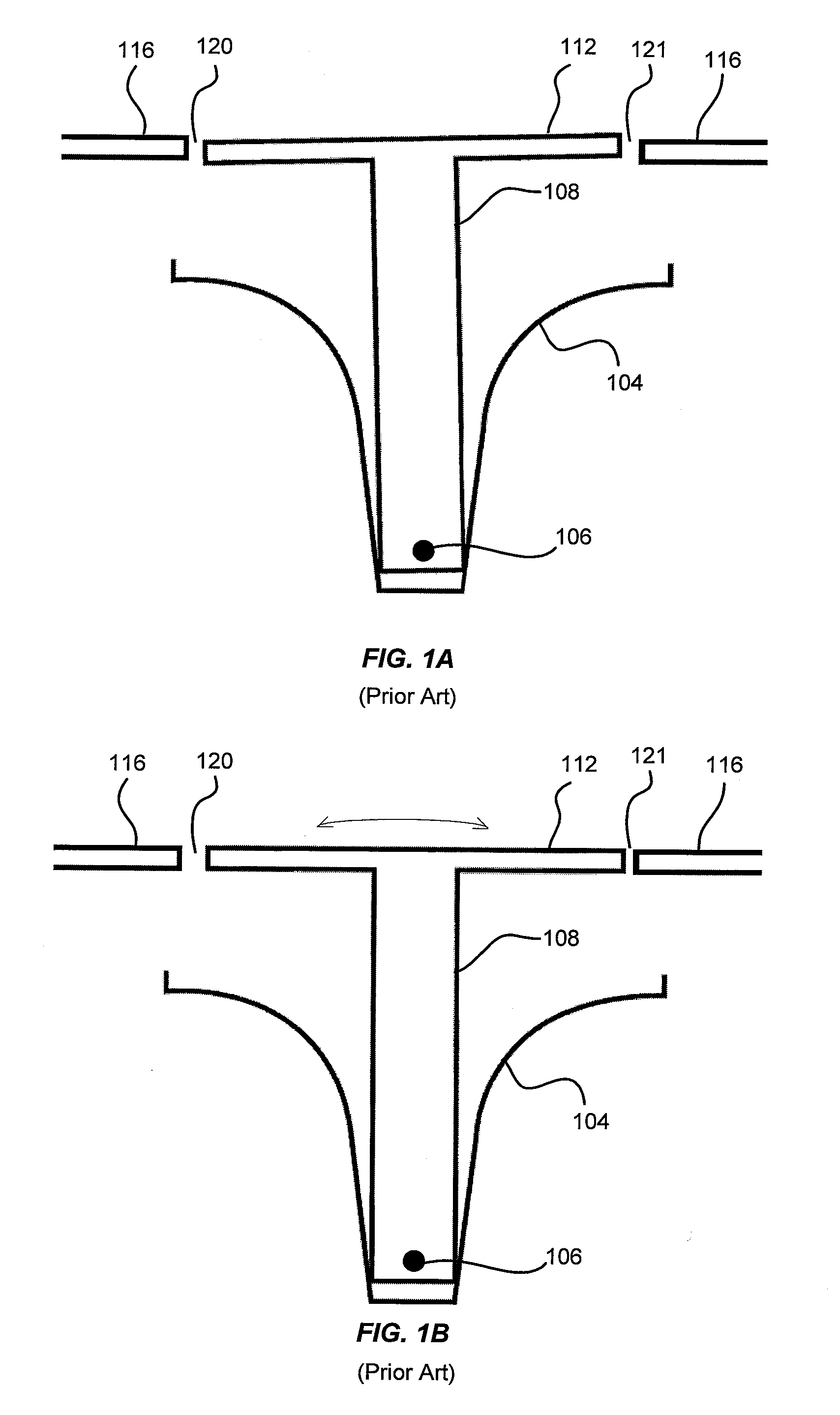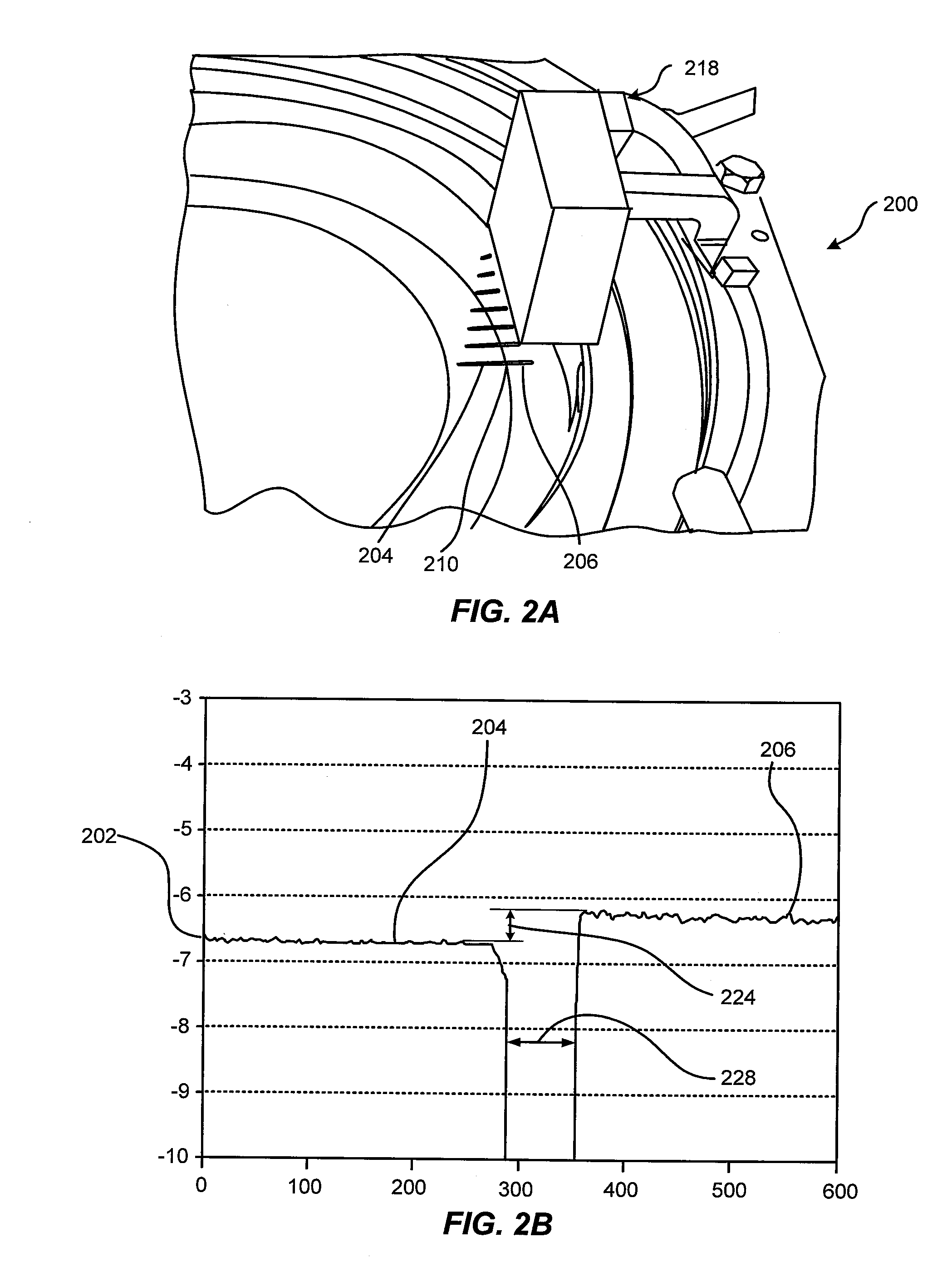Non-contact substrate support position sensing system and corresponding adjustments
a position sensing and substrate technology, applied in adaptive control, computer control, instruments, etc., can solve the problems of loss of productivity, unsatisfactory reliance on visual measurement, and non-uniform gap between the pedestal and the preheat ring, so as to minimize any downtime and recovery time
- Summary
- Abstract
- Description
- Claims
- Application Information
AI Technical Summary
Benefits of technology
Problems solved by technology
Method used
Image
Examples
Embodiment Construction
[0056]Aspects of embodiments disclosed herein are used to improve the performance of substrate processing systems by improving uniformity and repeatability of the process running on the substrate processing system. The uniformity and repeatability of processes are impacted by the location and levelness of the pedestal supporting the substrate being processed. Embodiments of the present invention relate to measuring the pedestal and / or substrate tilt and location relative to a fixed reference and adjusting the tilt and location of the pedestal and / or substrate. Measurements are performed using a non-contact and in-situ methods to precisely measure the pedestal and / or substrate tilt and location. This measurement is used as a feedback for either manual adjustment or automatic closed-loop servo based adjustment of the tilt and translation mechanism until the pedestal is level, centered and adjusted for height. The non-contact method allows the measurement to be done in vacuum thus redu...
PUM
 Login to View More
Login to View More Abstract
Description
Claims
Application Information
 Login to View More
Login to View More - R&D
- Intellectual Property
- Life Sciences
- Materials
- Tech Scout
- Unparalleled Data Quality
- Higher Quality Content
- 60% Fewer Hallucinations
Browse by: Latest US Patents, China's latest patents, Technical Efficacy Thesaurus, Application Domain, Technology Topic, Popular Technical Reports.
© 2025 PatSnap. All rights reserved.Legal|Privacy policy|Modern Slavery Act Transparency Statement|Sitemap|About US| Contact US: help@patsnap.com



